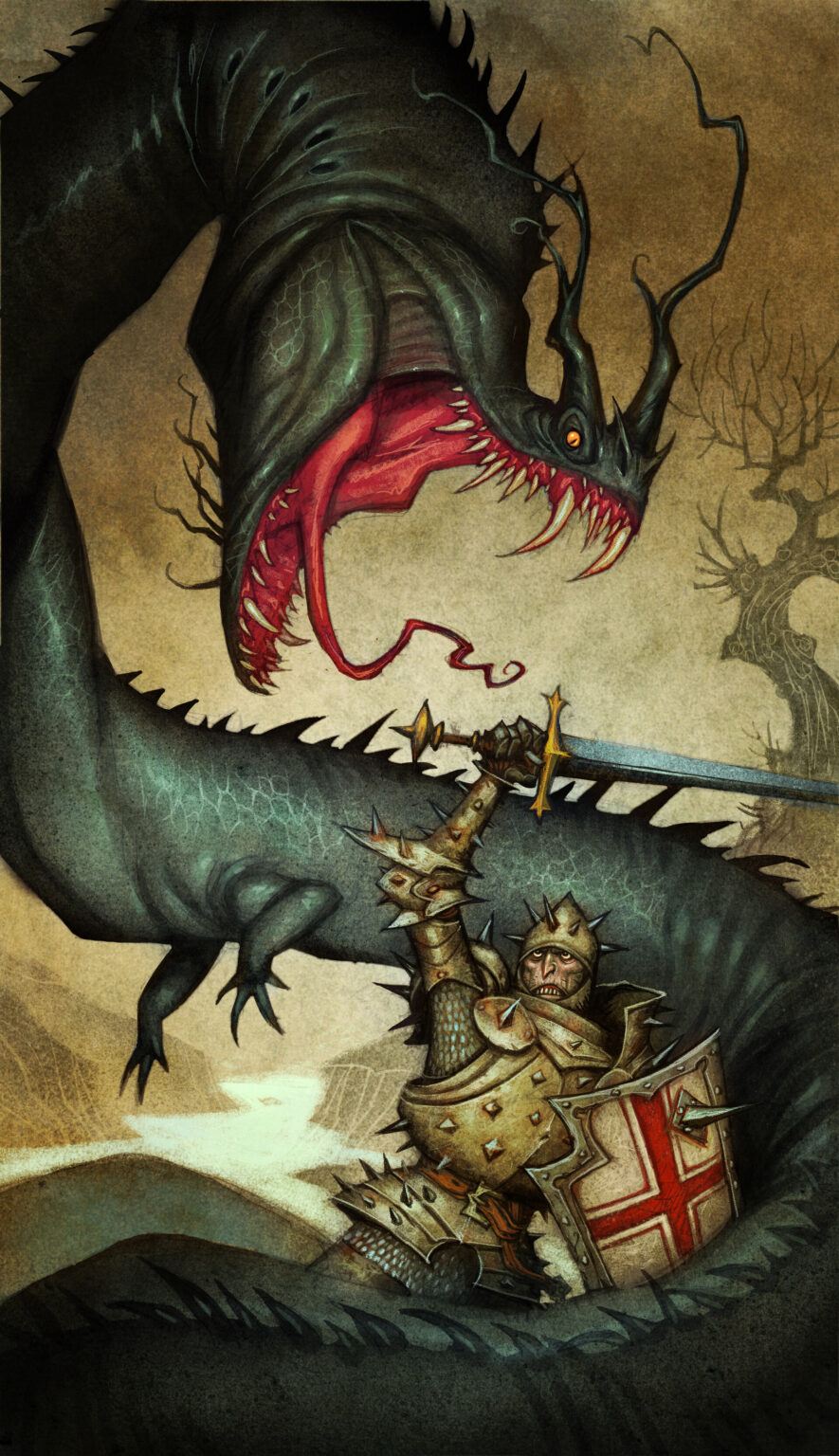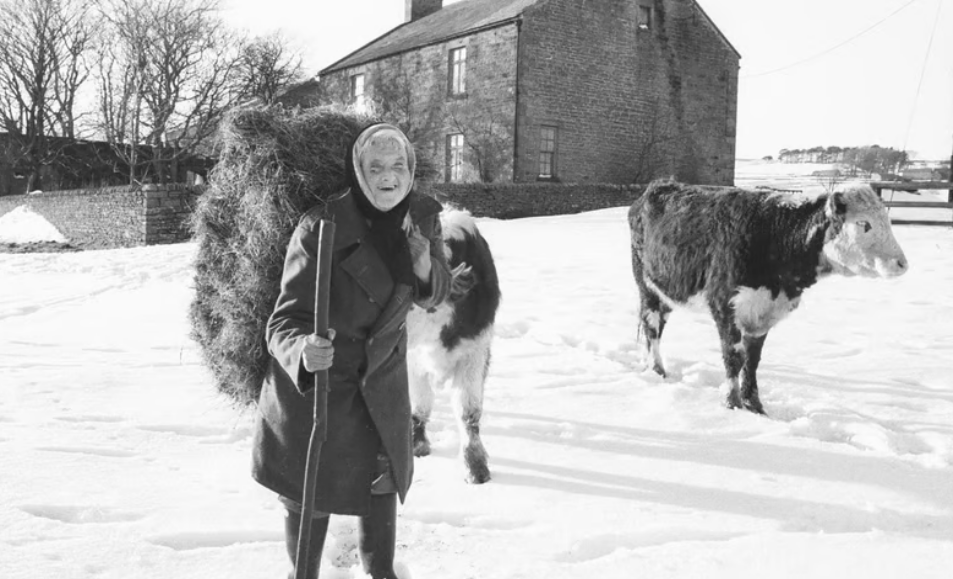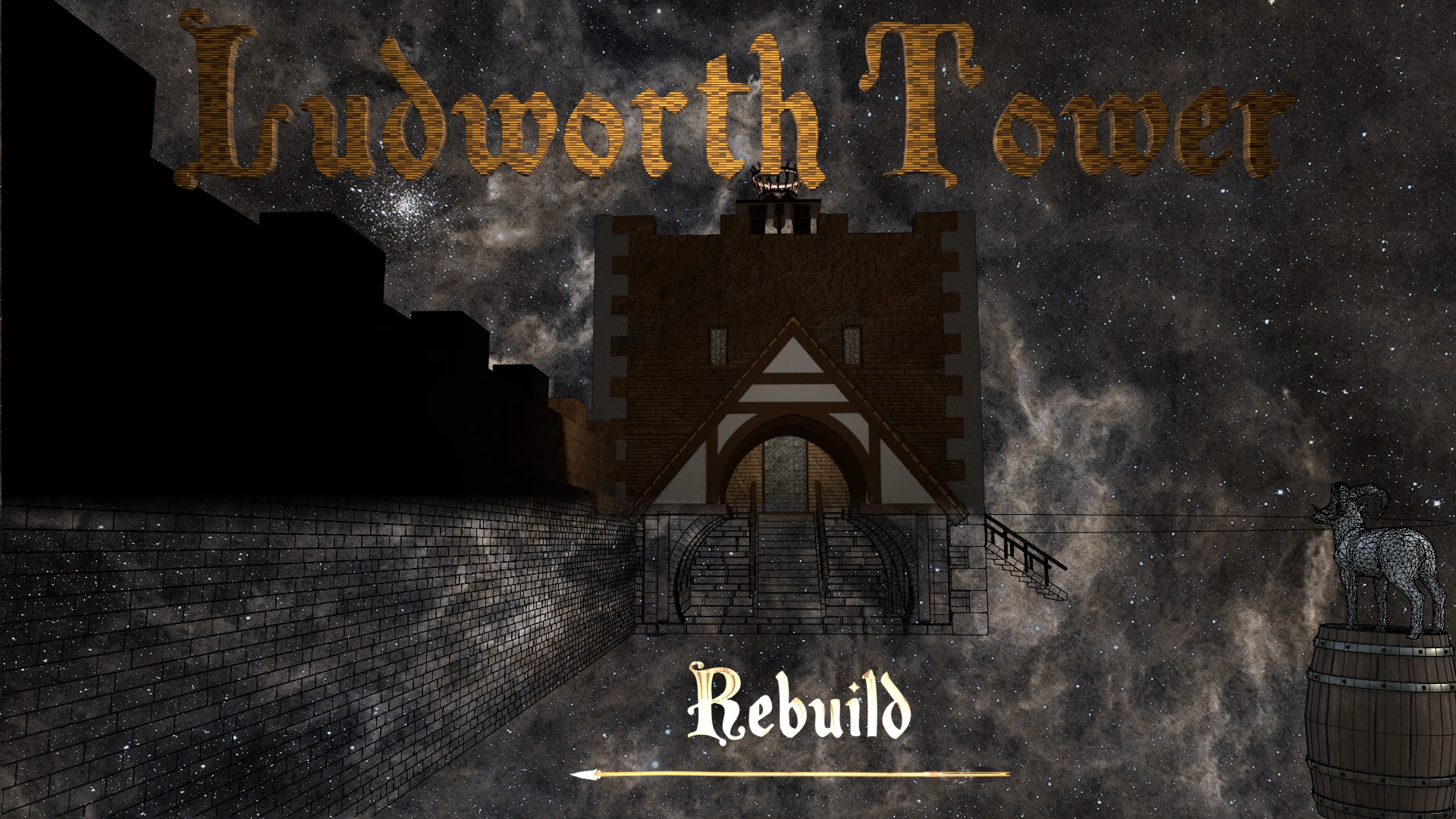Whisht! lads, haad yor gobs!
Whisht! lads, haad yor gobs, Aa’ll tell ye aall an aaful story,
Whisht! lads, haad yor gobs, An aa’ll tell ye aboot the worm.
The Song
The song “The Lambton Worm,” as presented, is a narrative ballad from English folklore that recounts the tale of a young fella named Lambton and his encounter with a git-big-googly-eyed monstrous worm, or dragon, in the River Wear.
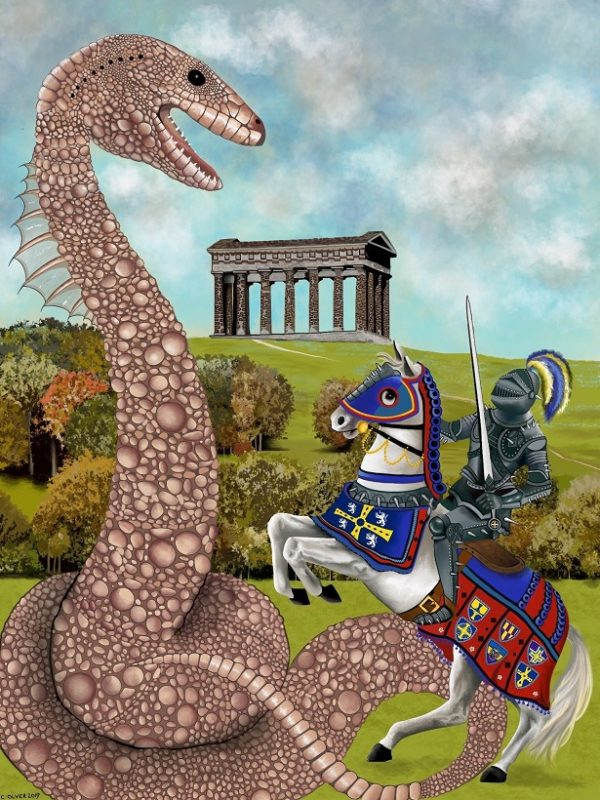
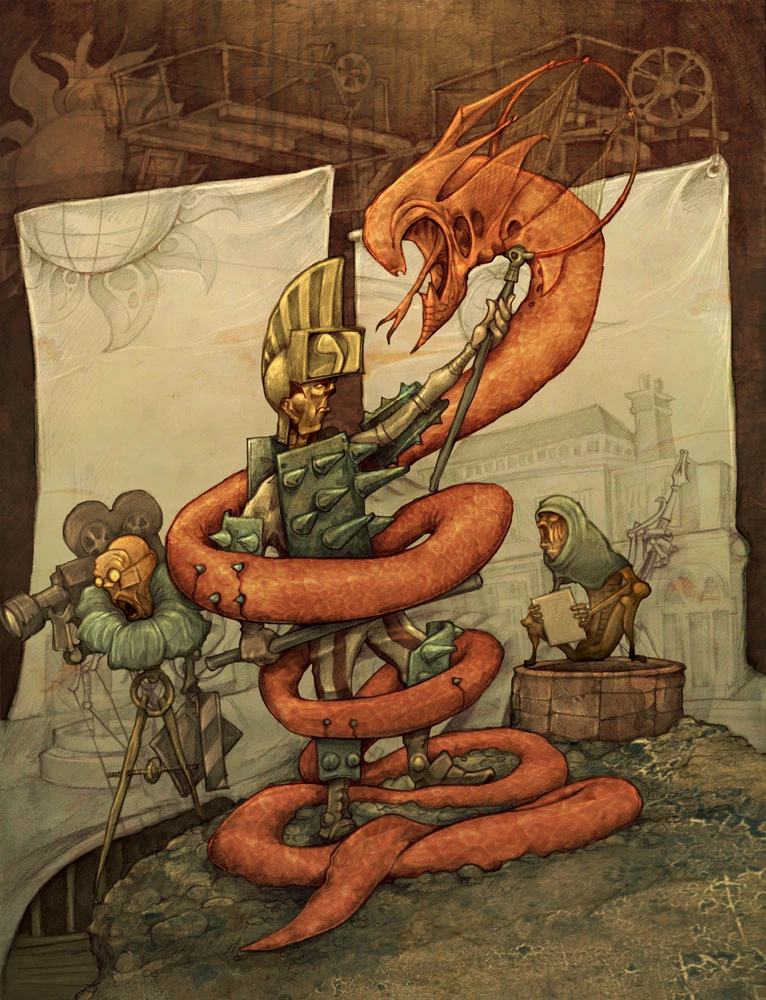
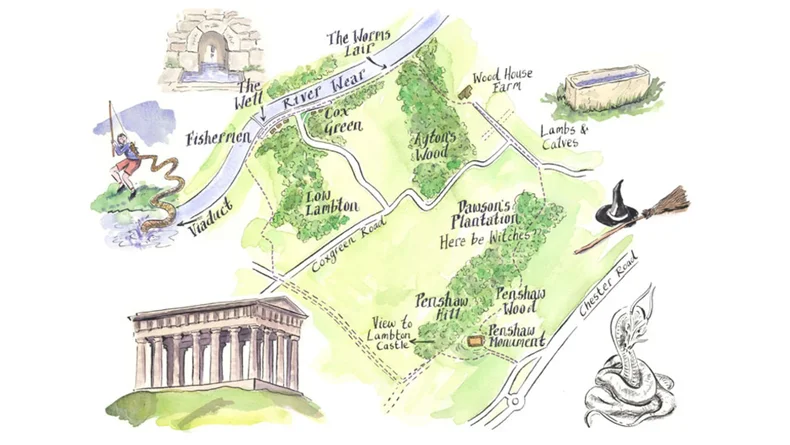
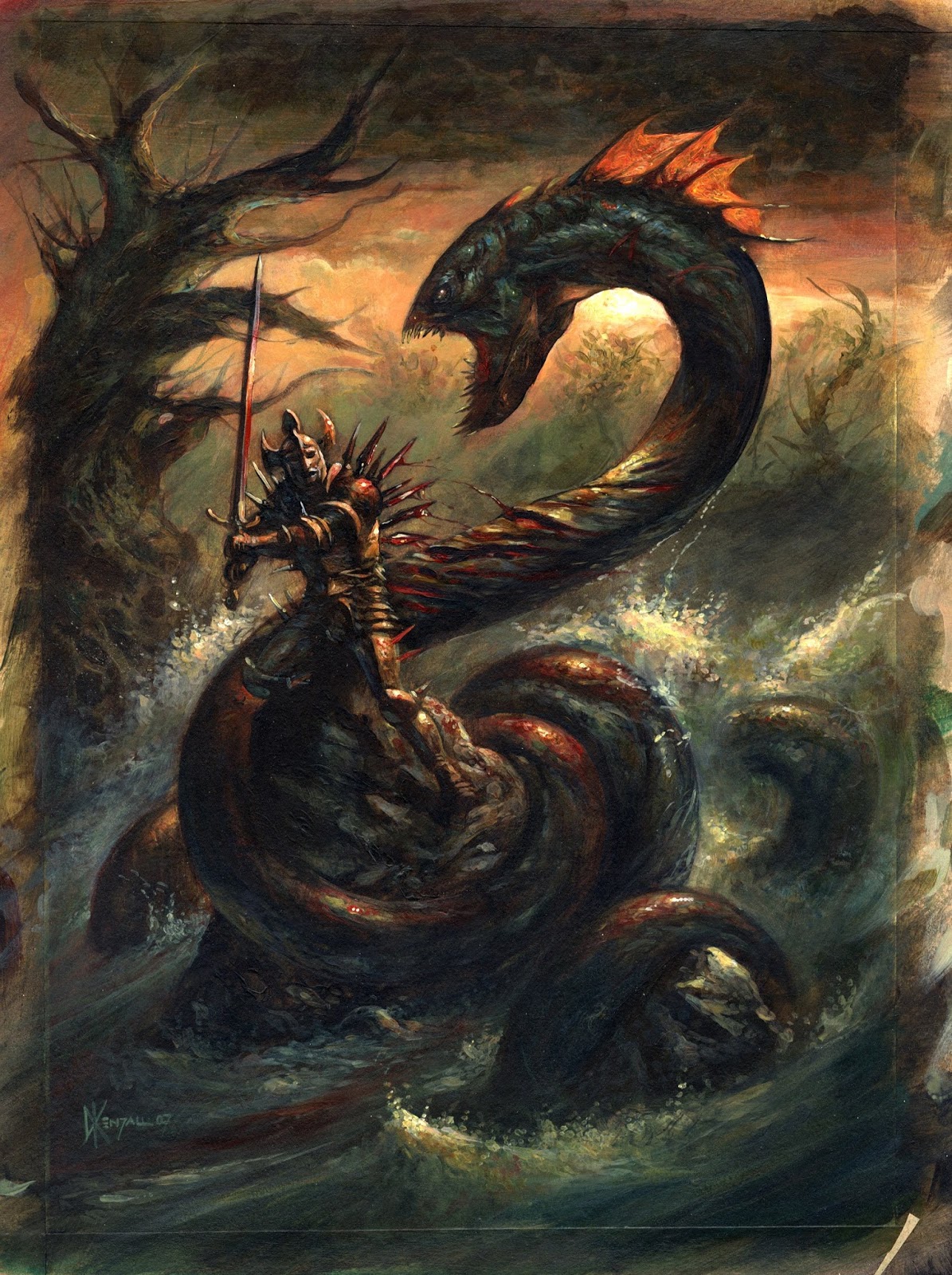
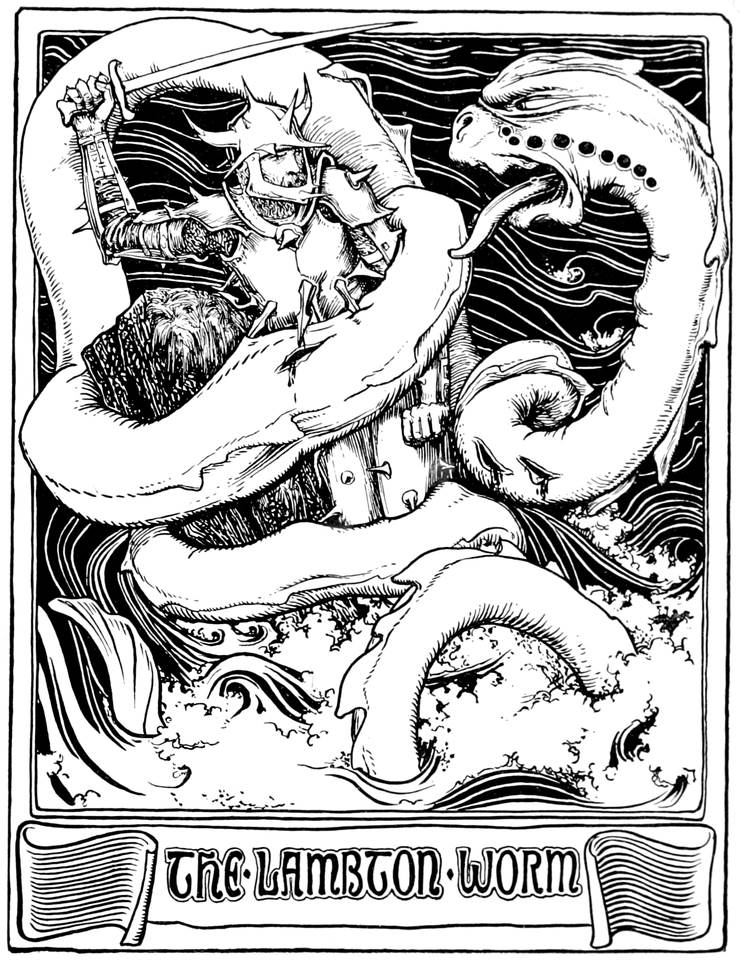
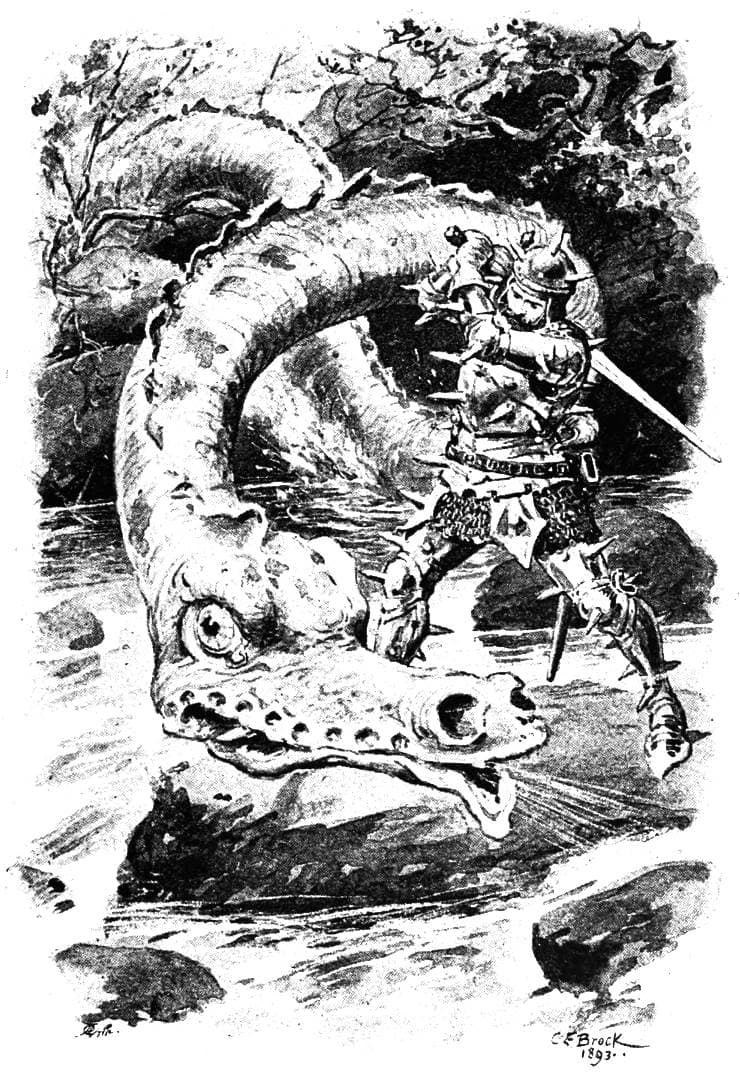
The Words
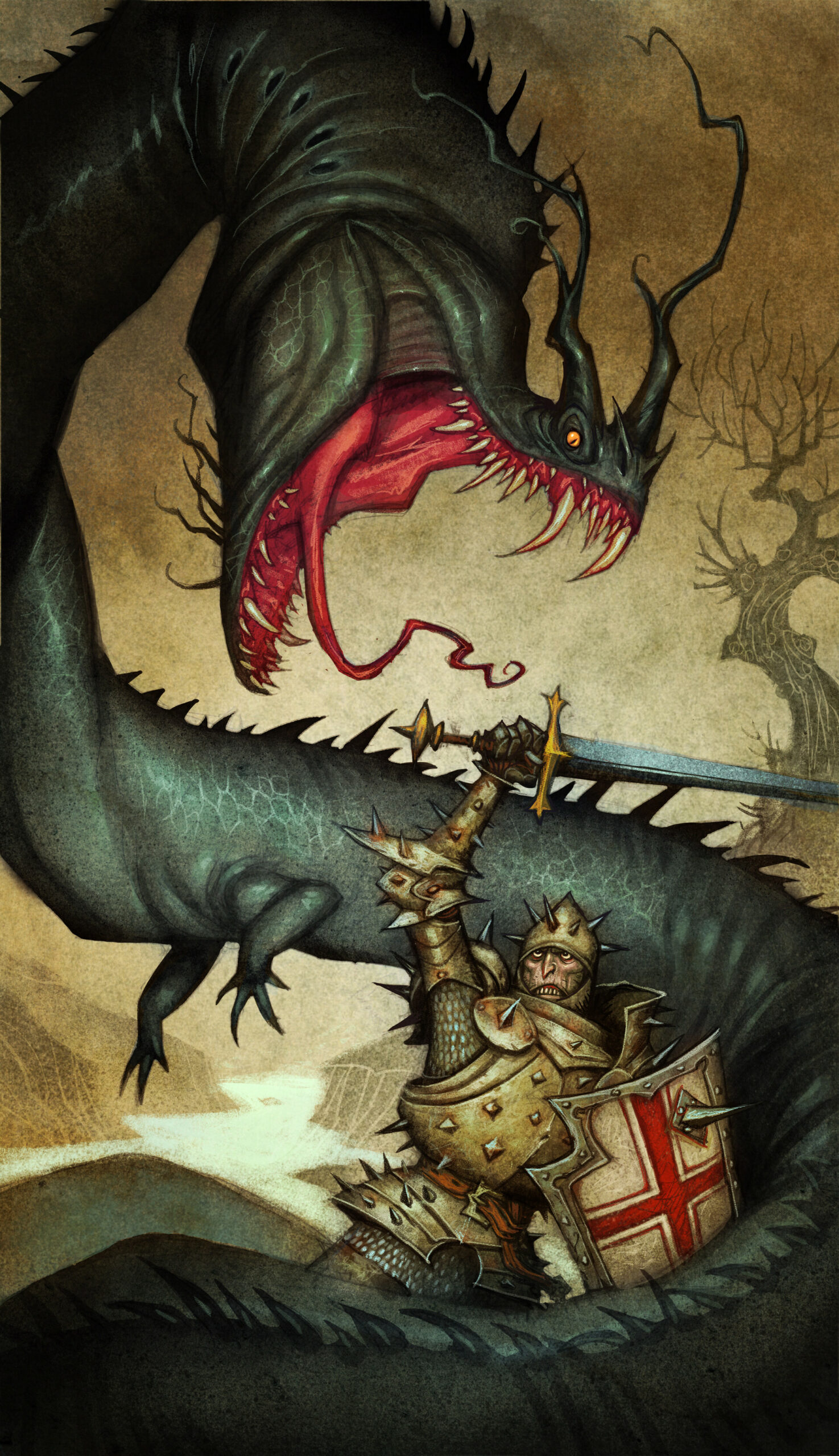
One Sunday morn young Lambton
Went a-fishin’ in the Wear;
An’ catched a fish upon his heuk,
He thowt leuk’t varry queer,
But whatt’n a kind of fish it was
Young Lambton couldn’t tell.
He waddn’t fash to carry it hyem,
So he hoyed it doon a well.
(Chorus)
Whisht! lads, haad yor gobs,
Aa’ll tell ye aall an aaful story,
Whisht! lads, haad yor gobs,
An aa’ll tell ye aboot the worm.
Noo Lambton felt inclined to gan
An’ fight in foreign wars.
He joined a troop o’ Knights
That cared for neither wounds nor scars,
An’ off he went to Palestine
Where queer things him befel,
An’ varry seun forgot aboot
The queer worm in the well.
(Chorus)
But the worm got fat an’ growed an’ growed,
An’ growed an aaful size;
With greet big teeth, and greet big gob,
An’ greet big goggley eyes.
An’ when at neets he craaled aboot
To pick up bits o’ news,
If he felt dry upon the road,
He milked a dozen coos.
(Chorus)
This feorful worm wad often feed
On calves an’ lambs an’ sheep
An’ swally little bairns alive
When they laid doon to sleep.
An’ when he’d eaten aall he cud
An’ he had had his fill,
He craaled away an’ lapped his tail
Seven times roond Penshaw Hill.
(Chorus)
The news of this most aaful worm
An’ his queer gannins on,
Seun crossed the seas, gat to the ears
Of brave an’ bowld Sir John.
So hyem he cam an’ catched the beast
An’ cut ‘im in three halves,
An’ that seun stopped him eatin’ bairns
An’ sheep an’ lambs and calves.
(Chorus)
So noo ye knaa hoo aall the folks
On byeth sides of the Wear
Lost lots o’ sheep an’ lots o’ sleep
An’ lived in mortal feor.
So let’s hev one to brave Sir John
That kept the bairns frae harm,
Saved coos an’ calves by myekin’ halves
O’ the famis Lambton Worm.
(Chorus)
Noo lads, Aa’ll haad me gob,
That’s aall Aa knaa aboot the story
Of Sir John’s clivvor job
Wi’ the aaful Lambton Worm.
The Lambton Worm (1867) by Clarence M. Leumane
Artist: JOHAN EGERKRANS
Summary of the Story
Carefree Abandonment
The tale begins with young William Lambton fishing in the River Wear. He catches a strange fish that he cannot identify and, not wanting to deal with it, he discards it into a well. This act sets off a chain of events that lead to unexpected consequences.
Let’s Go Crusading
Feeling adventurous and seeking glory, Lambton decides to leave his home behind and join a troop of knights headed for the Holy Land (Palestine). His choice to pursue battles and quests symbolizes the youthful desire for adventure, a common theme among young knights of the era.
The Worm Grows
Unbeknownst to Lambton, the fish he discarded grows into a terrifying creature—a giant worm that soon becomes a menace in the local area. Descriptions emphasize its immense size and fearsome nature; it begins to prey on livestock and even children, creating a sense of dread among the community.
Rampage
The worm’s insatiable appetite leads it to feast on calves, lambs, and young children, plunging the local populace into fear. This imagery evokes horror, illustrating how the creature disrupts daily life and instills terror into the hearts of the people.
Return & Confrontation
The news of the worm’s destruction eventually reaches Lambton while he is away at war. As he learns of the devastation caused by the creature, he feels a sense of duty and responsibility to return home and confront the beast, highlighting the chivalrous themes of heroism and accountability.
Defeat of the Worm
Upon returning, Lambton battles the monster and triumphs by cutting it into three parts. This climactic moment signifies classic narrative elements, where conflict leads to resolution, affirming Lambton’s role as a protector of his community.
Celebration
The song concludes with a celebration of Lambton’s bravery, as the locals acknowledge his courageous actions that saved them from the worm’s terror. The refrain evokes a sense of closure and unity among the community, reinforcing their collective identity.
Themes and Cultural Significance
Heroism and Responsibility
The story encapsulates the transformation of a young man from carelessness to heroism. Through facing adversity, Lambton emerges as a figure who takes on the responsibility of protecting his community, reflecting the ideals of knightly growth and courage.
Legacy and Folklore
As a piece of English folklore, the tale serves as both a cautionary story about the consequences of neglect and a heroic narrative about defending one’s home. The mention of local landmarks, such as Penshaw Hill, emphasizes the importance of regional identity within oral traditions.

Consequences of Actions
The narrative underscores that actions, no matter how trivial they may seem, can lead to significant consequences. Lambton’s initial act of throwing the fish away results in profound troubles for his community, serving as a reminder of the interconnectedness of actions and outcomes.
Community and Unity
The refrain, “Whisht! lads, haad yor gobs,” fosters camaraderie among the listeners, emphasizing the role of storytelling in strengthening community bonds. The shared narrative instills collective memories and values that resonate within the community.
Conclusion
“The Lambton Worm” is not merely a whimsical monster tale; it embodies deeper themes of heroism, responsibility, and the impact of one’s actions. As folklore, it serves to entertain while imparting morals and cultural identity, illustrating the enduring power of storytelling in preserving a community’s heritage and values.
Please subscribe for more of this stuff!
Modern Peasant chat and notes on Substack: modernpeasant.substack.com
Or simply subscribe here! Cheers. 🙂
